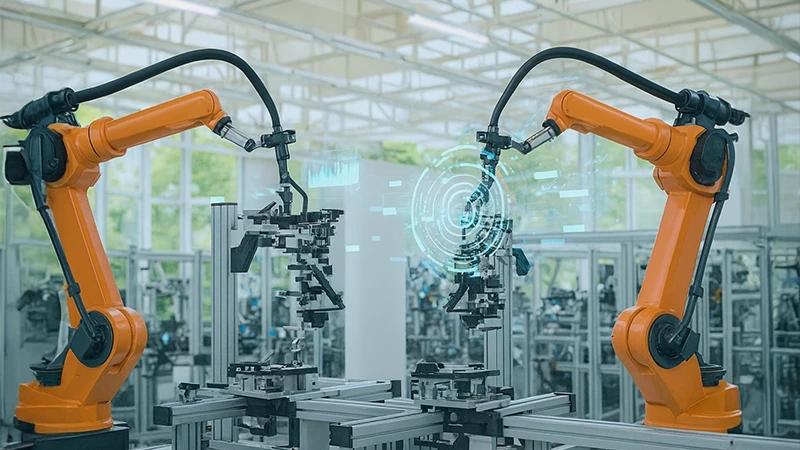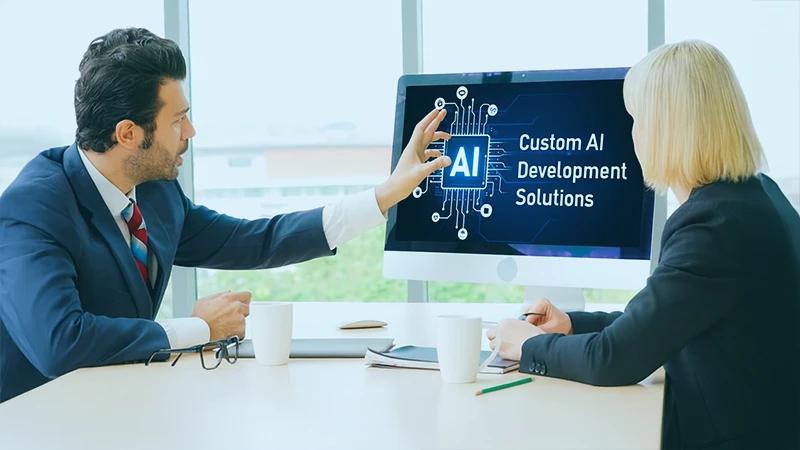Safety isn’t just a compliance checkbox in manufacturing. It’s the difference between a normal shift and a catastrophic event. Whether it's a malfunctioning robot, a forklift collision, or an unnoticed gas leak, the cost of safety failures isn’t just financial. It's human.
Yet many manufacturers still rely on outdated safety practices: manual checks, paper logs, and reactive incident response. That's changing fast. AI is bringing a proactive, predictive edge to factory safety—intervening before things go wrong.
The Safety Problem in Manufacturing
Manufacturing ranks among the highest-risk industries for workplace injuries. According to OSHA, tens of thousands of serious injuries occur in U.S. manufacturing every year. The reasons range from:
- Human error during equipment handling
- Poor visibility in busy areas
- Equipment malfunction or lack of predictive maintenance
- Fatigue-driven mistakes on repetitive tasks
- Chemical exposure or gas leaks
The challenge? Traditional safety measures are lagging behind the complexity and pace of today’s smart factories.
Also Read - Why Every Manufacturer Needs a Maintenance Repair Work Order AI Agent
AI-Driven Safety: From Reactive to Preventive
AI introduces something powerful: foresight. By analyzing streams of data from cameras, sensors, wearables, and machine logs, AI systems can detect anomalies, predict risks, and even intervene in real time.
Here’s how AI is reshaping safety protocols:
1. Computer Vision for Real-Time Hazard Detection
Imagine a camera system that doesn’t just record, but thinks. AI-powered vision systems can:
- Detect if workers are wearing proper PPE (hard hats, gloves, goggles)
- Identify unsafe behaviors (e.g., stepping into a restricted zone)
- Track forklift paths and alert on near-misses
- Recognize spills, smoke, or fallen objects instantly
One example: An electronics manufacturer installed AI vision at loading docks. The system detected when forklifts got too close to workers and triggered real-time alerts. Accidents dropped by 45% in three months.
2. Predictive Maintenance to Prevent Equipment Failure
Machines fail. But with AI, they don’t have to fail unexpectedly.
By analyzing vibration, temperature, sound, and historical usage data, AI models forecast when equipment is likely to break down. Maintenance can then be scheduled before any incident occurs.
This doesn’t just prevent downtime—it protects workers from injuries caused by sudden equipment failures.
3. Wearables + AI for Worker Health and Fatigue Monitoring
Smart wearables—helmets, vests, wristbands—can now monitor:
- Heart rate
- Fatigue levels
- Posture and motion
- Environmental conditions (heat, noise, gas exposure)
AI analyzes this data to spot signs of exhaustion or unsafe exposure. When thresholds are crossed, alerts go to supervisors or directly to the worker.
Example: A metals manufacturer saw a 60% drop in heat-related incidents after deploying AI wearables during summer shifts.
4. Digital Twins for Safety Testing and Simulation
Before launching a new process or layout, AI-powered digital twins simulate the environment. These simulations can:
- Identify bottlenecks that increase collision risk
- Test emergency response times
- Optimize workflow to reduce human-machine interaction in high-risk zones
What used to take weeks of manual risk assessments now happens in hours—and is data-driven.
5. Natural Language Processing for Smarter Incident Reporting
Workers often hesitate to report safety issues due to complexity or fear of blame. AI-powered chatbots simplify this.
Using natural language, workers can report hazards, near misses, or suggestions via voice or text. AI classifies and routes these reports for faster resolution and pattern detection.
Over time, this builds a richer, more accurate picture of risk areas in the facility.
Real-World Impact
AI safety systems aren’t theory—they’re saving lives today.
- A leading automotive plant reduced serious injuries by 33% after deploying AI vision and wearables.
- A chemical manufacturer eliminated over 90% of gas exposure incidents using AI-enabled environmental sensors.
- A food packaging facility used predictive maintenance to cut blade-related injuries to zero in one year.
Challenges and Considerations
Of course, AI isn’t plug-and-play. Success requires:
- Clean, labeled data to train models
- Integration with existing HSE (Health, Safety & Environment) systems
- Clear governance and alert thresholds
- Worker privacy considerations
But the ROI is clear: fewer injuries, lower insurance premiums, higher morale, and continuous compliance.
Final Thoughts
Manufacturing safety has always been about prevention. AI just makes that mission more powerful.
With the right AI strategy, safety becomes dynamic, predictive, and deeply embedded in daily operations—not a form to fill out after the fact.
At Intellectyx.ai, we help manufacturers deploy AI agents that prevent accidents before they happen. From computer vision to predictive models, our custom safety solutions deliver 24/7 protection, zero downtime, and measurable risk reduction.
Ready to future-proof your factory’s safety? Schedule a Free Consultation






